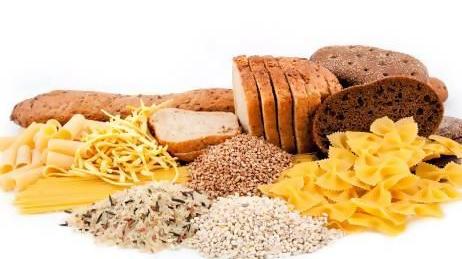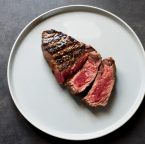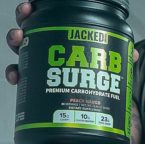One of the most common New Year’s resolutions for millions of Americans is actually to drop pounds and get in shape. If you fall into this category, you certainly know something about cutting down on carb consumption. And chances are you may also have heard of the unique dieting trend — carb backloading.
Before elaborating any further on carb backloading, we prefer starting with the basics.
Well, carbs are the main source of energy for supporting bodily functions and physical activity. However, some of the excess carbs end up being converted to fat. To avoid fat storage and lose weight, most diets advocate reducing the number of carbs you eat.
However, some diets typically force you to drastically slash the carbs you consume per day. The problem with this dieting technique is that it’s quite difficult or impossible for many people to stick to and achieve their weight loss goals.
Carb backloading takes a slightly different approach. With this diet approach, what matters most is when you eat your carbs and not how many carbs you eat daily. You’ll be eating some of your favorite snacks, treats, and junk foods. Yes, that’s right!
At first glance, you’d ask if this dieting strategy really works.
Without further ado, let’s now walk you through carb backloading and see if it is the right diet for you.

Related: The Secret to Carb Cycling for Fat Loss
What is Carb Backloading?
Simply put, this is a restrictive approach that encourages anyone looking to lose weight and get ripped to eat all their carbs later in the day. The diet approach was designed by John Kiefer, an exercise scientist and nutrition expert.
The concept of carb backloading is to minimize the consumption of carbs at breakfast and lunch and then hit your daily carb target at dinner —preferably after getting physically active. It is very easy to try and follow.
You’re told breakfast is the most important meal of the day. It’s true, but most people following this diet approach try to skip breakfast in most days. That isn’t necessary, though. You can have your breakfast, however, be sure to eat very few carbs.
The reason why Kiefer recommends eating fewer carbs in the morning is that there’s high insulin sensitivity in both the muscles and fat cells during this time compared to evening hours.
If you have tried intermittent fasting (IF) before, you’ll notice that this program works pretty well with many of the IF principles.
With carb back-loading, you’re basically required to eat proteins and fats before training later in the day. This is probably one of the key tricks you’ll learn here to reach your weight loss goals. What’s great, after a workout you can backload all your carbs to meet the daily requirements.
The creator of this program does not restrict you from eating carbs that have a higher glycaemic index (GI). Such carbs are known to release glucose into blood quickly. The insulin levels rapidly spike and then return to the normal range before you retire to bed. Kiefer states that this helps promote the optimal production of growth hormone.

How does carb backloading work?
Carb backloading takes advantage of your body’s natural insulin production and insulin sensitivity cycles induced by workouts, enabling you to store less fat and get ripped.
Let’s break it down…
Our bodies process carbs differently during the day. When you are physically active, more of the carbs broken down to glucose goes into your body tissues and muscles. During rest, insulin moves excess glucose into fat cells and is stored as glycogen, a form of long-term energy reserve. Over time, this leads to weight gain.
What carb backloading does is reverse the body’s tendencies on storing carbs by stripping it of the preferred source of energy, which is carbs. The approach forces your body to turn to the energy reserves.
By avoiding carbs throughout the day, your body will burn the carbs stored in fat cells for fuel. The workouts will help deplete your muscle glycogen stores, increasing your insulin sensitivity in the muscle cells. This means that the next time you eat the carbs, the body will preferentially shuttle them into your muscles, reducing carb storage in fat cells.
The program is at least based on this theory. So if it indeed helps you to reach your goals may depend on a magnitude of factors. But like all the diet programs already out there, Kiefer has provided dozens of studies to back up his approach.
For now, we’re not going that route. I’ll just share my first-hand experience with this program for over 3 years.
But before that, let’s first have a look at Kiefer’s recommendations.
First 10 days — 30g carbs
According to Kiefer, you will need to stick to 30grams or less for the first 10 days. Since carbs provide 4 calories per gram, this basically means consuming 120 calories from carbs or less every day. For most folks, such a low carb diet sucks. In a positive light, this is only for a short time. Also, you can still eat your normal fats and proteins.
Proteins and fats offer weight loss benefits. With proteins, they usually take a lot of energy to break down and be digested. Their slow digestion nature helps keep you feeling fuller for a long period. That way, you’re less likely to crave carbs. Like proteins, dietary fats also slow down digestion and keep your stomach feel full.
If you have no idea how to manage your protein and fat intake, just check out his “Carb Nite” program. It’s a good place to find the details you need. Generally, most nutrition experts recommend your total calorie intake to consist of 20% to 40% fats and 10% to 35% proteins.
On the 10th-day post work
Once you’re done with the first phase, now you can start post-workout backloading. Kiefer states that you can stick to your high GI carbs. If you’re a big fan of junk foods but love workouts, then there’s no doubt you’re going to like the carb back-loading technique.
Keeping in mind that you’re required to backload your carbs only on the training days. Otherwise, just eat the 30grams or less with fats and proteins until you train again. Looks pretty easy to adjust!

My experience with carb back-loading — How to go through the numbers
Daily intake of proteins and fats will vary depending on your body weight. In my case, we’re working with 220lbs. The generally recommended daily protein is up to 1g per lb of the body weight. Well, our maximum daily protein intake is between 200 to 220g per day. During the back-loading days, however, we reduce protein intake to roughly .65 per lb. This is around 143g per day.
Please note fats carry the highest amount of calories than carbs or proteins. Precisely, fats provide 9 calories per gram. Your daily intake of fat is solely at your discretion. If you go for a high-fat like us, then don’t go over .5g per lb of your body weight. My range is around 90g to 110g of fat every day.
With the carbs, I stick to 30grams or less per day on non-training days as Kiefer recommends. During training days, my range is between 1 and 2g per lb of bodyweight. This puts the daily carbs on back-loading days are around 220 to 440g per day.
When you want to lose body fat and get fit, we recommend that you keep your daily carb consumptions closer to 1g per lb of your total body weight. This is, of course, during the training days. On this level, also be sure not to go overboard with your daily proteins and fats. Just adjust according to your unique needs and preferences.
What if you train in the morning?
If your work schedule doesn’t allow you to train later in the day, the book by Kiefer provides the modifications too. He breaks down exactly how you need to go about it to benefit from this program.

Positive aspects of carb back-loading
This diet approach is outright fun and can help you escape the mainstream network of dietary nonsense. Many people are easily misled to think that losing body fat and building muscle is a trickier journey than it really is.
There’s a striking similarity between carb back-loading and IIFYM flexible dieting. For example, hitting and staying within your daily macronutrient targets. Also, no drastic restrictions on the foods you eat. You can eat the food you love with your family and friends on a regular basis, without worrying about compromising your efforts to lose weight loss or achieve muscle growth.
Related: What are Your Macros and How to Calculate Them
Is carb back-loading right for me?
Unfortunately, this program is not for everyone. It’s ideal for anyone who enjoys bigger meals late in the evening, especially after training. Whether it is a right dieting strategy basically depends on your personal preferences and body type, as well as if you’re willing to track your macronutrients.
On another note, this diet should not be seen as an excuse to feed your body with junk food. It is not a miracle dieting strategy for fat loss or muscle growth. So, be sure to have your high GI carbs or sugar processed foods in moderation.
Final thoughts
Office workers that sit on a desk most of their working hours and typically work out later in the evening might find carb back-loading worth giving a short. If you have tried intermittent fasting or IIFYM dieting technique, then you’ll find this one a breeze. It will surely fit your lifestyle best.

Ryan is a former college wrestler and lifelong fitness fanatic with over 25 years in the industry. He’s run half marathons, tackled mud runs, placed in body transformation contests, and coached everything from wrestling to girls’ soccer.
Along the way, he’s tested hundreds of supplements and built a deep well of supplement knowledge. His work has appeared in Muscle & Strength, Testosterone Junkie, The Sport Review, and more. Today, he’s the editor-in-chief of this site, still training hard and helping others reach their goals. Connect with him on LinkedIn below.








